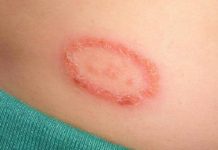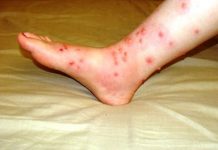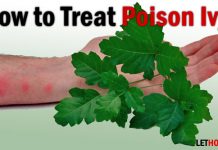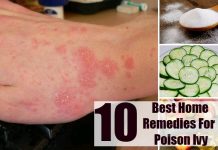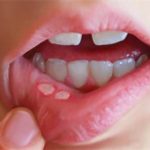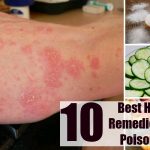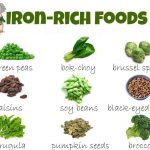Poison ivy plant makes a dreadful companion. The resin present in their oil is toxic and cause severe dermatitis when coming in contact, and cause a respiratory problem if you will burn them. To get rid of poison ivy plant simply you can pull the plant if you will stay covered and dispose the plant carefully, or use natural or glyposphate based chemical herbicides labeled for the use of against poison ivy. You should also prevent regrowth afterward by digging up the roots, lingering the are with mulch, and also treat the area with preventative herbicides throughout the growing season. You use these methods to kill poison Ivy Plants.
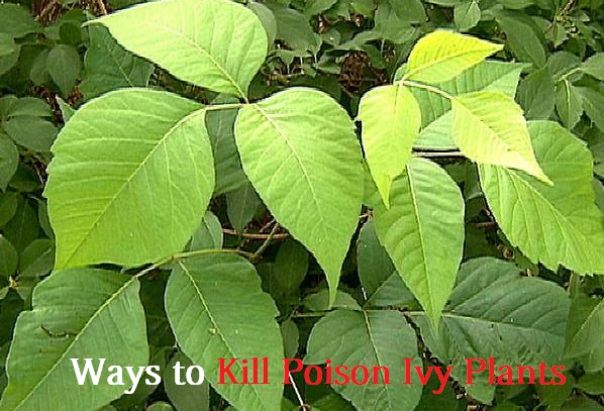
Ways to kill poison Ivy plants
1.) Pulling out plants to get Rid of Poison Ivy
If you are not particularly allergic or you know someone who is not allergic to poison ivy, so pulling ivy works great to kill poison ivy plants. You will need to be repeated pulling as roots will have been missed.
you need to keep your distance while pulling out the plants.
- Consider wearing long-sleeved shirts, boots, pants, heavy duty rubber gloves.
- Use long-handled garden tools to handle the plant. Don’t touch any part of the plant with your gloves hands. The more distance between your skin the plant will be the better it will be for you.
- When you are rooting up, chop long roots and vines into short sections, lift with a reacher and deposit into a trash can lined with a plastic bag.
- Keep in mind to pull out the roots only with long handled pliers, in short sections. Long sections of the vine will bounce around and eventually tap to your face or other exposed skin.
2.) Covering the roots to Kill Poison Ivy Plants
Be aware that the roots contain rash-causing oils. If you really need to remove or work in sites with poison ivy, you need to follow these steps.
- Wash up with techno extreme. Take shower and repeat the techno wash three times or more.
- Wash all the clothing, shoes and gloves isolated from the items three times. Tools can also be contaminated. Tecnu lotion of other removers will also work. Oil last a year in most items.
- Dump deep soils or light rocks to hold the covers down. Consider concrete edging or rocks to reduce the likelihood of vine escape. Put pots of the flower if you want some color in the spot.
- Overlap with the plastic past the cardboard. You need to use U-shaped landscape anchor pins and a sheet of 4 ml black plastic. They are sold in small to large rolls. Take one piece if it is possible. The pins should be close together and plastic should be bigger than the are you are covering.
- Put down the large pieces of cardboard. The boxes appliances come in are ideal and use these to walk on over the patch. those may be free from a local store but you have to ask to get them before they to their recycling.
- Wear long pants, long sleeve shirt or get a slicker set that will be worn only for poison ivy work. You also need hand protection and eye protection.
3.) Herbicide to Get Rid of Poison Ivy
Use glyphosate-based herbicide kill poison ivy plants, such as roundup or a specific poison ivy killer.
- Mix the concentrated herbicide with water, three times the normal strength. Don’t use readily mixed herbicide, as it is not strong enough to destroy poison ivy.
- Pour the herbicide container in a sprayer, like an empty window cleaner sprayer. First, read the instruction on the herbicide label. Then Label the sprayer and keep this sprayer for only this purpose, in a safe place.
4.) Spray to Kill Poison Ivy Plants
On a day that a not windy or it is about to rain, spray thoroughly. To coat all the poison ivy leaves with the solution.
- You need to wear long sleeve shirts, long pants, plastic gloves over cotton, socks and fully enclosed boots or shoes.
- Try not to get the solution or any other plants as they will die due to this. plants take the herbicide in through their leaves, then the plant dies.
- For poison ivy in tress cut the vine off 6 inches above the ground and treat the stump with the glyphosate after cutting. Spray the solution that re-sprout
- If it keeps coming back on the ground, look for it up in some nearby trees. It will keep reseeding itself as long as you don’t get the parent vine.
- The poison ivy should turn yellow and will die in two weeks.
5.) Prevent Regrowth to Get Rid of Poison Ivy Plants
Wearing gloves as the root can also produce a poison ivy characteristic effect, dig down the soil at least 8 inches to kill poison ivy plants. This will help to prevent the future regrowth. Make sure to go to the right to the end where the roots are growing.
- Make sure to keep your gloves on when digging or you will get a rash, as even dead stalks can give you rash from urushiol. Wear a mask to safety glass is also a good idea.
- Pick up the roots while wearing gloves and use plastic bags to stuff the roots into for removal by garbage collection.
- You can use how or the stubborn or difficult root removal.
- Smoother the area where poison ivy was growing. Use black plastic, cardboard, mulch, newspaper etc. To cover up the area where poison ivy grew to prevent its regrowth.
7.) Check the area
Check the area several times a year and take steps to kill poison ivy plants if you see it is growing.
- Do this for several years because where the poison was, there is probably more you haven’t seen yet.
- Poison ivy is very persistent, as they will come back from the roots that are not removed or killed. It may be necessary to spray the vines two to more times to succeed n removing them completely. Watch for the seedlings dispersed by the birds carrying the seeds.
8.) Decontaminating
Be vigilant as to which part of the clothing the plant touches on your, such as your gloves, pants etc. when removing your clothes later, make sure to use clean gloves and drop it all right into your washing machine. Wash these clothes separately.
- Wait to use soap and water until after cleaning with vinegar, rubbing alcohol, commercial cleaner mineral spirit. The initial cleanser will remove the poison ivy irritant.
9.) Place Physical Barrier
If poison ivy creeps into your living spaces from the forest edge, install a physical barrier between the two, it will ensure that the poison ivy doesn’t creep back in. try a pond, section of pavement, or a constantly mowed area between the encroaching poison ivy and your garden. Consider buying a rhizome weed barrier.
- Prefers the solution that permanently or semi-permanently gets the job done without the need for constant management.
- It has been suggested that any of these will form a thick root barrier that will not allow poison ivy to creep through.
10.) Replace Poison Ivy with other Plants
Once you are sure that poison ivy is dead and you don’t need to treat the area again with herbicides or other solution, then you can replace the poison ivy with other more desired plants. Keep in mind that poison ivy fills the two ecological niches that you know, feeding songbirds with fall berries and protect the soil as a ground cover. Seek out plants that can fill these niches.
- Identify what you want to plant, it could be berry-producing tree and shrubs or a ground cover, or both. You can keep the rest of the are with thick in wood chips. The wood chips are important.
- Once you have established the new plants, the new plant will protect the area and will keep the poison ivy from creeping back in.


